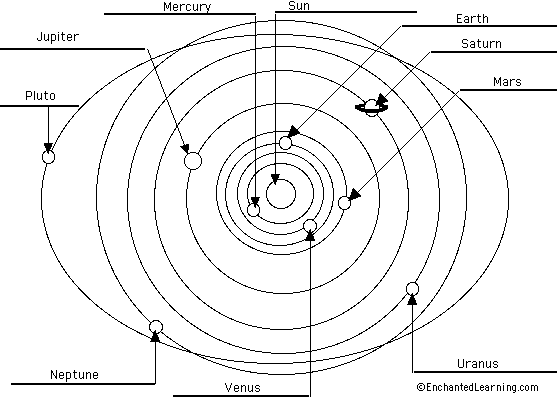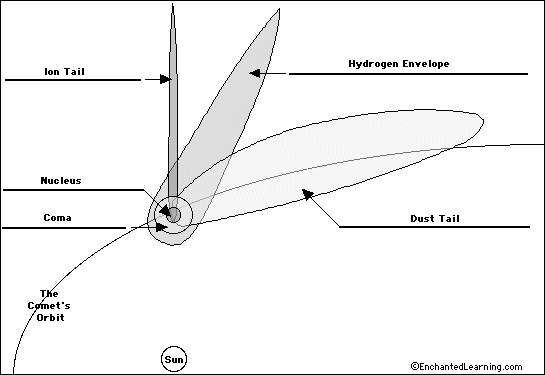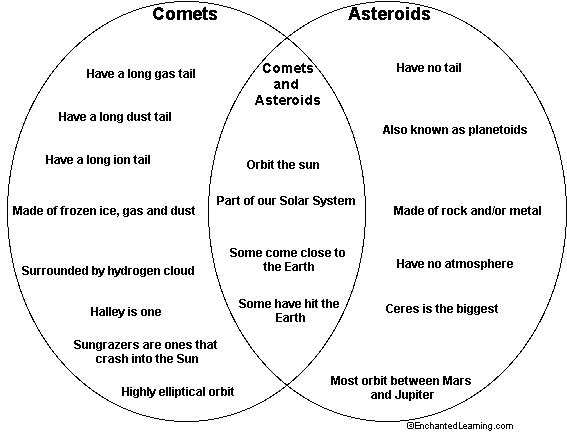Учебное пособие Астрономия. Космическая техника и технологии Алматы, 2012 удк 802. 0 52 629. 7 (0758) ббк 81. Англ. 923
 Скачать 1.02 Mb. Скачать 1.02 Mb.
|
|
Answer Keys: Unit 1 What is Astronomy Match the words and definitions: 1 H 2 J 3 A 4 I 5 B 6 C 7 D 8 G 9 E 10 F Text 1A Pioneers of Astronomy 1 Isaac Newton 2 Edwin Hubble 3 Nicolaus Copernicus 4 Albert Einstein 5 Johannes Kepler 6 Stephen Hawking 7 Tycho Brahe Text 1B Branches of Astronomy 1 Planetary astronomy 2 Radio astronomy 3 Galactic astronomy 4 Stellar astronomy 5 Cosmology 6 Extragalactic astronomy 7 Solar astronomy 8 Astrophysics Listening What is Astronomy? 1objects 2 gateway 3 stars 4 temperature 5 surface 6 chemistry 7 made of 8 planetary 9 universe 10 astronomy Unit 2 Galaxies and Stars Listening How did the Milky Way get its name? 1 100 2 100,000 3 island 4 dark matter 5 black hole 6 25,000 7 spiral arms 8 milk 9 repot Stars: Cloze Activity Stars can live for billions of years. A star is born when an enormous cloud of hydrogen gas collapses until it is hot enough to burn nuclear fuel (producing tremendous amounts heat and radiation). As the nuclear fuel runs out (in about 5 billion years), the star expands while the core contracts; it becomes a giant star that eventually explodes and turns into a dim, cool object (a black dwarf, neutron star, or black hole, depending on its initial mass). The largest stars have the shortest life span (still billions of years); more massive stars burn hotter and faster than their smaller counterparts (like the Sun). Stars are giant nuclear reactors. In the center of stars, atoms are taken apart by tremendous atomic collisions that alter the atomic structure and release an enormous amount of energy. This makes stars hot and bright. In most stars, the primary reaction converts hydrogen atoms into helium atoms, releasing an enormous amount of energy. In the universe, most stars occur in groups of at least two stars. Two stars that are locked in an elliptical orbit around their center of mass (their barycenter) are called a binary star system. About half of all stars are in a binary star system. There are larger groups of stars, called clusters, that are relatively unorganized collections of stars. Huge, organized collections of stars are called galaxies. Our Solar System is located in the Milky Way Galaxy, a spiral galaxy. All groups of stars are held together by gravitational forces. Unit 3 Solar System Cloze Activity:
Our Solar System consists of the sun, eight planets and a dwarf planet (and their moons), an asteroid belt, and many comets and meteors. The Sun is the center of our Solar System. The planets, their moons, the asteroids, comets, meteoroids and other rocks and gas all orbit the Sun. The planets that orbit the sun are (in order from the Sun): Mercury, Venus, Earth, Mars, Jupiter (the biggest planet in our Solar System), Saturn (with large, orbiting rings), Uranus, Neptune, and Pluto (a dwarf planet). A belt of asteroids (many minor planets made of rock and metal) orbits between Mars and Jupiter. These objects all orbit the Sun in roughly circular orbits that lie in the same plane, called the ecliptic (Pluto is an exception to this; it has an elliptical orbit that is tilted over 17° from the ecliptic). The inner planets (those planets that orbit close to the Sun) are quite different from the outer planets (those planets that orbit far from the Sun). The inner planets are Mercury, Venus, Earth, and Mars. They are relatively small, composed mostly of rock, and have few or no moons. The outer planets are Jupiter, Saturn, Uranus, Neptune, and Pluto (a dwarf planet). They are mostly huge, mostly gaseous, ringed, and have many moons (again, the exception is Pluto which is small, rocky, dwarf planet with one large moon and two tiny moons). Start thinking! 1 Mercury is the planet closest to the Sun. 2 Jupiter is the fifth planet from the Sun. This gas giant is the largest planet. 3 Pluto is a dwarf planet that is usually the farthest planet from the Sun. It is smaller than the 8 planets. 4 Mars is a red planet and the fourth planet from the Sun.  Listening “Why Do the Planets Orbit the Sun?” 1 A planet orbits the Sun just as the moon or a satellite orbits Earth. Isaac Newton, one of the most brilliant scientists of all time, provided the first good explanation of orbits. Newton realized that the reason the planets orbit the Sun is related to why objects fall to Earth when we drop them. The Sun's gravity pulls on the planets, just as we now understand Earth's gravity pulls down anything that isn't held up by some other force. More massive objects produce a bigger gravitational pull than less massive ones, so as the heavyweight in our solar system; the Sun exerts the strongest gravitational pull. 2 Well, in addition to falling toward the Sun, the planets are moving sideways, around the Sun. This is the same as if you have a weight on the end of a string and swing it around. You are constantly pulling it toward you, but the motion sideways keeps it swinging around. Like the string, the Sun’s gravity pulls on the planets, but the planets have enough sideways motion to keep them in their orbits. 3 Yes, it is. The rocket has to do much more than boost the spacecraft above the atmosphere—it also has to provide enough speed for the spacecraft to keep swinging around Earth and not just fall back to the surface. Now if we give the spacecraft a really big boost, it can travel fast enough to leave Earth orbit and enter its own orbit around the Sun, eventually meeting up with its target elsewhere in the solar system. 4 If the spacecraft is headed, say, to Saturn, in some cases we can get it there faster if we fly it close enough to Jupiter, with its tremendous gravity, to take a little of the planet’s orbital energy and fling the spacecraft even faster. If the spacecraft is going fast enough past a planet it won’t get captured into orbit, but the planet’s gravity will bend the spacecraft’s path and make it go faster, helping propel it along its way through the solar system. 5 Well, not really. As a rule, spacecraft get a big initial boost from a rocket and then coast to their destinations. Most spacecraft can carry only enough fuel to fire their engines for a few minutes to make course changes or slow down just enough to be captured into orbit around another planet. We do have a different kind of propulsion system, though, that outperforms conventional systems It’s known as ion propulsion, which many science fiction fans have heard of. This engine is so efficient that it can thrust for years instead of minutes, which means its speed gradually increases until the spacecraft is going extremely fast indeed. NASA’s New Millennium Program tested ion propulsion on the Deep Space 1 mission a few years ago and it worked fantastically. In 2007 we will use it on the Dawn mission to the asteroid belt, and I’m sure other exciting missions of the future will use it as well. Unit 4 Constellations Answer the questions: 1 c 2 88 3Because the universe has expanded since then. 4 Complete each sentence below. The ancient Greeks thought the Big Dipper looked like a big bear. Long ago, people of Britain thought the Big Dipper looked like a plough or plow. Ancient Irish and French people thought the big dipper looked like a chariot. Listening “It's a Zoo Up There in Space. Make That a Galaxy Zoo” 1 Mars Rovers 2 dwarf planets 3 Jupiter 4 Eris 5 water ice 6 solid 7 Vesta 8 spacecraft 9 system 10 colors 11 universe 12 one hundred thirty 13 moonlight 14 colorful 15 Sky 16 Galaxy Zoo 17 change over time Unit 5 Planets and the Sun Listening “A Direct Look at Five Planets Far From Our Solar System” 1 stars 2 three hundred twenty 3 in front of 4 Eight Seven Nine 5 optics 6 way 7 eighteenth 8 sixty-three 9 six hundred to seven hundred Unit 6 Asteroids and Comets Cloze Activity Asteroids are rocky or metallic objects, most of which orbit the Sun in the asteroid belt between the planets Mars and Jupiter. A few asteroids approach the Sun more closely. Asteroids are also known as planetoids or minor planets. The first asteroid discovered (and the biggest) is named Ceres; it was discovered in 1801. About 3,000 asteroids have been cataloged. Asteroids range in size from tiny pebbles to about 578 miles (930 kilometers) in diameter (Ceres). There are about 40,000 known asteroids that are over about 0.5 miles (1 km) in diameter in the asteroid belt. Sixteen of the 3,000 known asteroids are over 150 miles (240 km) in diameter. There are many smaller asteroids. Some large asteroids even have orbiting moons. None of the asteroids have atmospheres. The asteroid belt is a doughnut-shaped concentration of asteroids that orbit the Sun between the orbits of Mars and Jupiter, closer to the orbit of Mars. Most asteroids orbit from between 186 million to 370 million miles (300 million to 600 million km or 2 to 4 AU) from the Sun. The asteroids in the asteroid belt have a slightly elliptical orbit. The time for one revolution around the Sun varies from about three to six Earth years. The strong gravitational force of the planet Jupiter shepherds (guides) the asteroid belt, pulling the asteroids away from the Sun, keeping them from falling into the inner planets. The asteroid belt is not smooth; there are concentric gaps in it (known as Kirkwood gaps). These gaps are orbits where the gravitational forces from Jupiter do not let asteroids orbit (if there were asteroids there, they would be pulled towards Jupiter). The Kirkwood gaps are named for Daniel Kirkwood who discovered them in 1866. The asteroid belt may be material that never coalesced into a planet, perhaps because its mass was too small; the total mass of all the asteroids is only a small fraction of that of the Earth's Moon. A less satisfactory explanation of the origin of the asteroid belt is that it may have once been a planet that was fragmented by a collision with a huge comet. Comets  Comets Cloze Activity A comet is a small, icy celestial body that orbits the Sun. Comets are made up of a nucleus (it is solid ice, gas and dust), a gaseous coma that surrounds the nucleus (it is made of water vapor, CO2, and other gases) and a long tail (made of dust and ionized gases). The long tail of gas and dust always points away from the Sun, because of the force of the solar wind (a continuous stream of electrically charged particles - ions- that are given off by the Sun). A comet's tail can be up to 250 million km long, and is most of what we see of the comet. Some well-known comets are Halley's, Shoemaker-Levy 9, Hale Bopp, and Swift-Tuttle. Comets orbit the Sun in highly elliptical orbits. Their velocity increases greatly when they are near the Sun and slows down at the far reaches of the orbit. Comets are light only when they are near the Sun (when the gas is vaporizing); comets are dark (virtually invisible) throughout most of their orbit. We can only see comets when they're near the Sun. Some comets crash into the Sun or get so close that they burn up; these comets are called sun grazers. The Earth passes through the orbit of some comets. When this happens, the left-over comet debris (rocks, etc.) bombards the Earth, and the debris burns up in our atmosphere. This is called a meteor shower; in it, many meteors fall through the atmosphere in a relatively short time. Listening What powers a comet? 1 tais 2 comets 3 planets 4 coma 5 the Sun 6 tail 7 spacecraft 8 pictures Complete the diagram:
 Quiz: Space and the Universe 1 asteroids 2 Mars and Jupiter 3 energy 4 Venus and Mercury 5 98 percent 6 hunter 7 238,866 miles 8 Pluto 9 Jupiter 10 Clyde Tombaugh Unit 7 The atmosphere Match the words with the definitions: 1) l 2) q 3) t 4) h 5) s 6) a 7) r 8) n 9) g 10) b 11) o 12) c 13) p 14) m 15) d 16) k 17) f 18) i 19) g 20) e True or False?T F 1 Without the ozone layer dangerous sunlight would reach the earth’s surface. T 2 77 % of the earth’s atmosphere is made up of oxygen. F 3 The weight of the atmosphere is the same everywhere. F 4 Methane rises into the atmosphere from plants and animals. T 5 The atmosphere is kept near the earth because of gravity. T 6 The troposphere is bigger near the poles. F 7 In the troposphere winds get stronger when you move higher up. T 8 Temperatures go down in all parts of the atmosphere . F 9 The stratosphere extends to about 80 km above the earth’s surface F 10 CFCs come from the sun and endanger our atmosphere F 11Fossil fuels produce carbon dioxide. T 12 Acid rain has poisonous gases like sulphur and nitrogen in it. T 13 When a volcano erupts sunlight can be blocked out for many years. T 14 Rockets can only travel up to the stratosphere. F 15 In higher parts of the atmosphere you can find helium and hydrogen. T 16 All of the gases in the atmosphere are produced by people. F Match a part from A, B and C to form complete sentences: The atmosphere filters sunlight and keeps dangerous rays from reaching our planet. Without an atmosphere it would not be possible to live on earth. Carbon dioxide is present in small amounts but it is very important. Air is heaviest at sea level because the molecules are pressed together. The troposphere is a part of the atmosphere that we know best. At the top of the troposphere winds reach speeds of 300 km an hour. In the mesosphere the air becomes thinner and the temperatures drop. In the exosphere molecules are very far from each other. In the past centuries people have caused great changes in the atmosphere. Unit 8 Text 8B | ||||||||||||||
